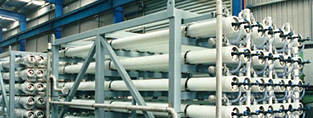
- (03) 5909 8218
- enquiry@fusionweld.com.au
Pressure Vessel Piping Design: Standards and Analysis
February 9, 2017

Systemic design practices are essential if fuel and chemical storage complexes are to operate safely. That means the storage units must be geometrically reliable, obviously, and expertly rated to tolerate pressure changes, temperature variations, and chemical reactions. All that planning sounds productive, but is it a comprehensive solution? Not even close, not if the design methodology doesn't accommodate for the pressure vessel piping.
What is Pressure Vessel Piping?
In short, this is the network of fluid transmitting conduits that couples each vessel to the processing system. There are valves and angle-turns, pipes and branching junctions, all welded or bolted together. Flanges and gaskets function as linkages between each section. Finally, the convoluted lines carry every imaginable fluid medium, from steam to crude oil. Logically, if the pressure vessel is spaced to safely store these fluids, then all vessel-associated piping must satisfy the same stringent engineering specifications. This is where a piping-biased design and analysis strategy enters our awareness.
Highlighting Piping Design Standards
Fluids in geometrical vessels occupy the minds of pressure vessel designers. Meanwhile, flow characteristics act differently when pipes enter the scenario. Primarily, there are more parts in play, so a flange testing program is an essential part of the inspection mandate. Additionally, gasket technology is still regarded as a potential system weakness, although newer spiral-wound gaskets are currently changing that viewpoint. Otherwise, adopt all due diligence when adhering to national and international pressure vessel piping regulations. These include but are not limited to the AS 2885 and the ASME B31.3 guidelines.
Analysing Pressurised Piping for Fidelity
Due to joint profusion, a rigorously implemented inspection strategy requires careful oversight. Initially, high-grade alloys are sourced from heat treatment facilities so that the alloys balance a predetermined hardness quotient against a required ductility rating. Weld and machining standards are maintained at high-tolerance levels, and the completed products are then analysed. Advanced sensory devices are typically tasked with analysing the base materials for metallurgical flaws. Meanwhile, a macroscopic methodology retrains the focus of the inspection so that the processing elements satisfy the safety guidelines. Flow valves and pressure relief systems are considered here, for a faulty pipe can create a potential disaster. Of course, that disaster is avoidable as long as there are multiple relief redundancies in place and operating.
Several levels of engineering acumen dominate the standards and analysis procedures that evaluate pressure vessel piping systems. There are ASME and AS rulings to weigh, plus a dual analysis methodology to consider, one that weighs material characteristics alongside processing configurations to form a whole picture perspective.
Contact Details
Fusion - Weld Engineering Pty Ltd
ABN 98 068 987619
1865 Frankston Flinders Road,
Hastings, VIC 3915
Ph: (03) 5909 8218
Optimized by NetwizardSEO.com.au
Recent Posts
- Compressed Hydrogen Storage Vessels: Material Selection, Design & Australian Standards
- Welding QA/QC in Oil & Gas Pressure Vessel Fabrication – Ensuring Code Compliance
- AS1210 vs ASME VIII Pressure Vessel Code: Key Differences for Australian Projects
- Mitigating Hydrogen-Induced Cracking in Pressure Vessels: Engineering and Material Strategies
- Storage Tank Solutions Australia: Field-Erected, Prefabricated & Self-Bunded Explained
- Reducing Environmental Risks: Self-Bunded Tanks in Australian Oil & Gas Operations
- Precision in Production: How Pressure Vessels Are Manufactured for Industrial Safety
- Shell & Tube Heat Exchangers: Improve Thermal Control & Energy Recovery in Petrochemical & Pharmaceutical Plants
- In-Service Inspection for Compressed Air Receivers for Power Plant Shutdown Prevention
- Power Plant Pipe Spooling Fabrication – Get Rapid, Code-Compliant Spools Ready for Installation
- Field Erected Tanks: Safe, Reliable On-Site Fuel Storage Solutions in Australia
- Custom Pressure Vessel Fabrication for Flammable Gases
Posts 2025
- Compressed Hydrogen Storage Vessels: Material Selection, Design & Australian Standards
- Welding QA/QC in Oil & Gas Pressure Vessel Fabrication – Ensuring Code Compliance
- View all articles…
Posts 2024
- Large Process Vessels: Optimising the Design for Maximum Efficiency [2025]
- Pressure Equipment Management System Installation: Detect Equipment Faults Early
- View all articles…
Posts 2023
- Pressure Piping System Inspection: A Gift of Safety for the Holidays
- Deaerator Inspections by Fusion-Weld Engineering and How They Reduce System Downtime
- View all articles…
Posts 2022
- How Fusion Weld Keeps Up With AS-NZS ISO 9001:2008 Standard
- Boiler Equipment Safety Inspection During the Summer Season
- View all articles…
Posts 2021
- Avoid These Factors and Practices that Contribute to Sealing Damage in Pressure Vessels
- Do's And Don'ts Of Industrial Boiler Inspection And Maintenance From Fusion-Weld
- View all articles…
Posts 2020
- What are the Risks and Hazards Involved in Pressure Vessel Equipment?
- How to Know if Your Pressure Equipment Needs Repair or Replacement?
- View all articles…
Posts 2019
- Factors that Contribute to Pressure Vessel Failure
- Pressure Vessel Regulations in Australia: What are the Mandatory Requirements?
- View all articles…
Posts 2018
- Pros and Cons of Spherical vs. Cylindrical Pressure Vessels
- What are the Different Hazard Levels in Pressure Vessels?
- View all articles…
Posts 2017
- Transportable Pressure Vessels: The Importance of Inspection and Safety Checks
- Fracture Mechanics and Stress Analysis of Cracks in Pressure Vessels
- View all articles…
Posts 2016
Posts 2015
- What Are Deaerators & Feedwater Vessels?
- Precautions and Safety for Compressed Air Receiver Vessels
- View all articles…
Posts 2014
- Demonstrating In-process Inspection Procedures
- Static Grounding Practices and Standards
- View all articles…